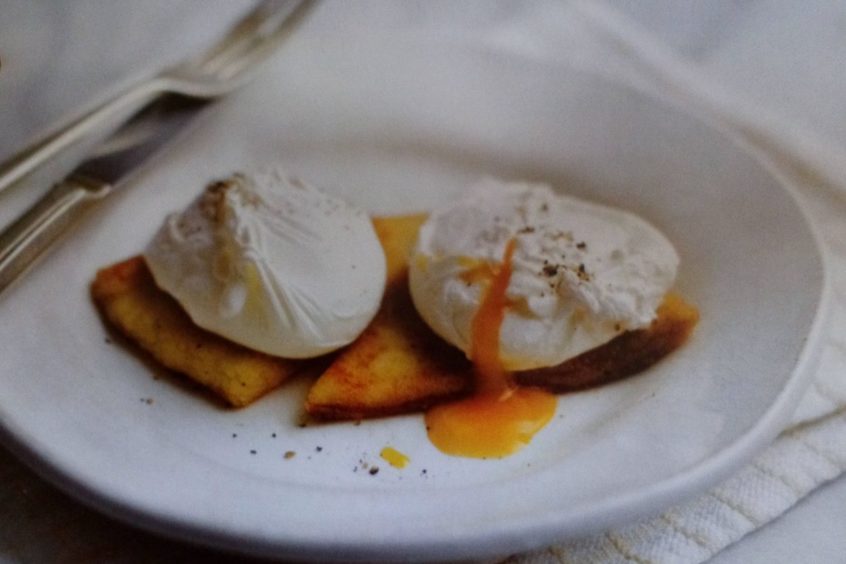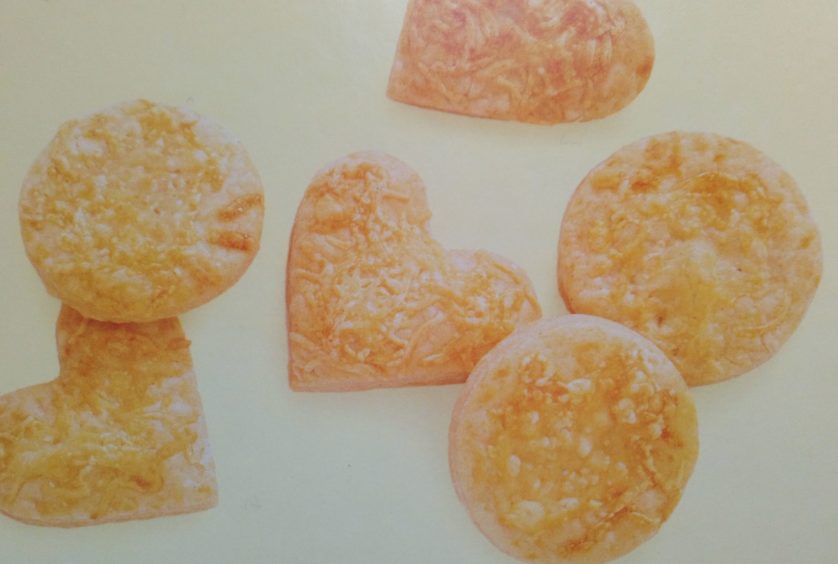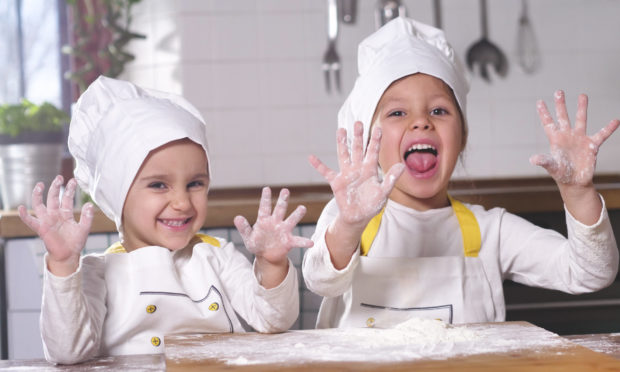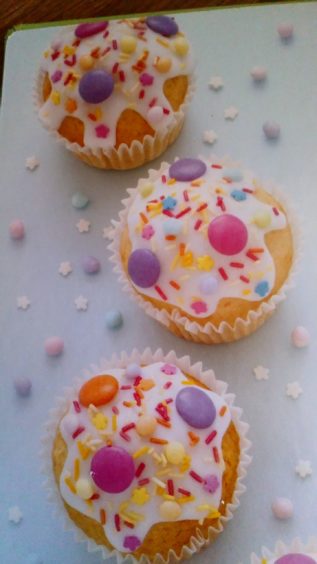There are two ways families can look at the current situation we’re all living in: feel miserable at the prospect of being stuck at home or see this as a unique period when you can share some of your life skills with your children.
And one of the most important life skills a youngster can have is being able to cook for themselves.
My three children are all grown up now but over the years I’ve enjoyed showing them, and my eight-year-old grandson, Marcus, how to make some of the basics.
I worked on the principal that if they knew how to cook an egg, make pancakes or a pan of soup, they wouldn’t starve!
But we also had fun making simple cakes and biscuits, some of which I’m sharing here.
I can’t take credit for any of them, as I’ve pulled these recipes out of my own selection of cookbooks I’ve gathered over the years, but I can tell you they all work.
The muffin and cheesy biscuit recipes come from The Usborne First Picture Cookbook by Jo Litchfield and Fiona Watt, which I bought in a Save The Children charity shop for the grand price of £1 – money well spent.
The tattie scone and poached egg recipe comes from the P&J Love Food Compact Cookbook, a reader giveaway from a few years ago that has also proved to be very useful over the years.
These recipes are pretty easy but, as always, some adult supervision will be required if you’re working with youngsters to ensure everyone stays safe.
Tattie scones with poached eggs

THE INGREDIENTS – SERVES 4
- 350g peeled tatties (a floury potato like Kind Edward works best)
- 30g butter plus a little extra
- 85g plain flour, plus a little extra
- ½ tsp salt
- ½ tsp baking powder
- 8 eggs
THE METHOD
- Cut the tatties into chunks and cook in slightly salted boiling water for 10-15 minutes.
- Drain well, add the butter and mash.
- Sieve the flour into a mixing bowl with the baking powder and salt.
- Stir into the mash while it is still warm.
- Turn the mix out on to a floured surface, knead lightly and roll into a circle about 5mm thick.
- Cut into 8 triangle shapes.
- Grease a heavy-based frying pan and place over a medium heat.
- Cook the scones for 3-4 minutes on each side until they are golden brown.
- Set aside and keep warm.
- Bring a small pan of water to the boil and stir with a spoon to create a little whirlpool.
- Crack an egg into the centre.
- Reduce the heat and simmer gently for 2-3 minutes, until the white is set but the yolk is still soft.
- Remove the egg from the pan using a slotted spoon.
- Drain on kitchen roll and set aside to keep warm.
- Cook the remaining eggs and place on top of the scones. Serve immediately.
Cheesy shapes
INGREDIENTS
MAKES ABOUT 15
100g plain flour
50g butter or margarine
The yolk from 1 egg
5 tsp cold water
75g grated cheddar cheese
DIRECTIONS
Heat the oven to 190C, 375F, gas mark 5.
Sift the flour into a big bowl.
Cut the butter into chunks and add it to the bowl.
Rub the butter into the flour with your fingers until it looks like breadcrumbs.
Mix the egg yolk and water in a small bowl.
Put 2 tbsp of the egg/water mix into a cup for later on.
Stir half the cheese into the bowl with the flour.
Stir in the egg mixture and use it to make a dough.
Squeeze the dough into a ball and cover with clingfilm.
Pop in the fridge for 30 minutes.
Then, remove the dough and sprinkle a little flour on to a work surface.
Roll out the dough until it is as thick as your little finger.
Use cookie cutters to cut out different shapes.
Place them on to a greased baking sheet.
Brush the shapes with the remaining egg mixture.
Sprinkle the leftover cheese on top.
Bake the shapes for 12 minutes until they are golden.
Leave them on a wire rack to cool.
Easy muffins
THE INGREDIENTS – MAKES 10
- 300g plain flour
- 2 tsp baking powder
- 150g caster sugar
- 50g butter or margarine
- 225ml milk
- 1 medium egg
- For the icing:
- 2 tbsp lemon juice (ready-bought is fine)
- 175g icing sugar
THE METHOD
- Heat the oven to 200C, 400F or gas mark 6.
- Put 10 muffin cases into the holes in a muffin tin.
- Sift the flour and baking powder into a large bowl.
- Add the sugar into the bowl and mix with the flour.
- Cut the butter/margarine into pieces into a pan.
- Add four tbsp of milk.
- Heat the butter until it melts (get an adult to help with this).
- Take the pan off the heat and add the rest of the milk.
- Break the egg into a cup and mix it.
- Pour it and the milk/butter mix into the bowl of dry ingredients.
- Stir until everything is just mixed, then spoon the mix into the muffin cases.
- Bake in the oven for 15 minutes.
- Lift on to a wire rack and leave them to cool.
- Mix 2 tbsp of lemon juice with the icing sugar.
- Spoon the icing over the muffins.
Cheesy shapes

THE INGREDIENTS – MAKES ABOUT 15
- 100g plain flour 50g butter or margarine
- The yolk from 1 egg 5 tsp cold water
- 75g grated cheddar cheese
THE METHOD
- Heat the oven to 190C, 375F, gas mark 5.
- Sift the flour into a big bowl.
- Cut the butter into chunks and add it to the bowl.
- Rub the butter into the flour with your fingers until it looks like breadcrumbs.
- Mix the egg yolk and water in a small bowl.
- Put 2 tbsp of the egg/water mix into a cup for later on.
- Stir half the cheese into the bowl with the flour.
- Stir in the egg mixture and use it to make a dough.
- Squeeze the dough into a ball and cover with clingfilm.
- Pop in the fridge for 30 minutes. Then, remove the dough and sprinkle a little flour on to a work surface.
- Roll out the dough until it is as thick as your little finger.
- Use cookie cutters to cut out different shapes.
- Place them on to a greased baking sheet. Brush the shapes with the remaining egg mixture.
- Sprinkle the leftover cheese on top.
- Bake the shapes for 12 minutes until they are golden.
- Leave them on a wire rack to cool.

